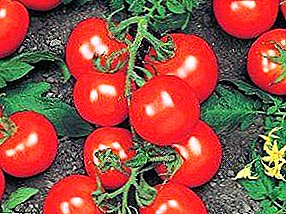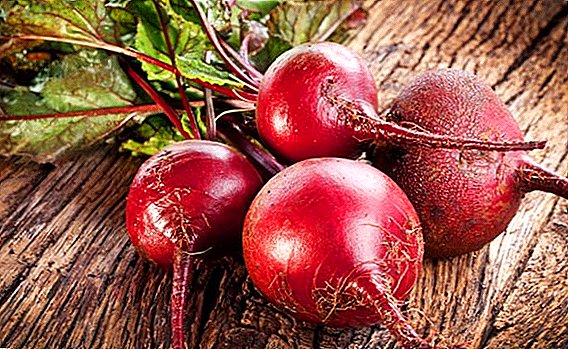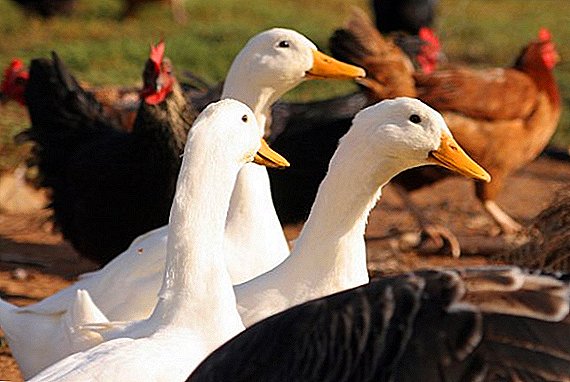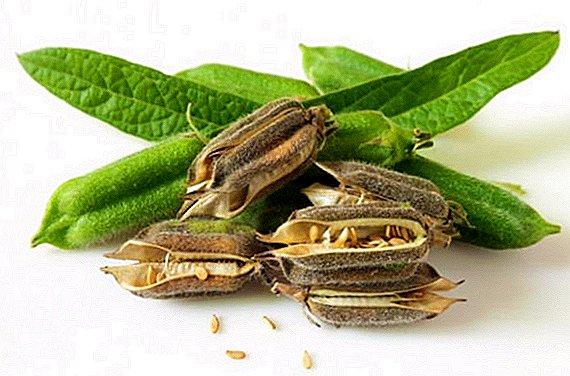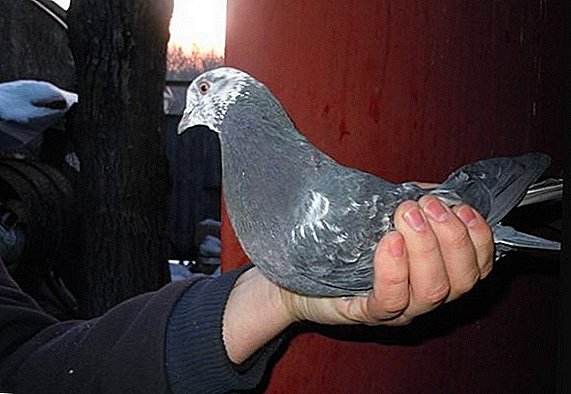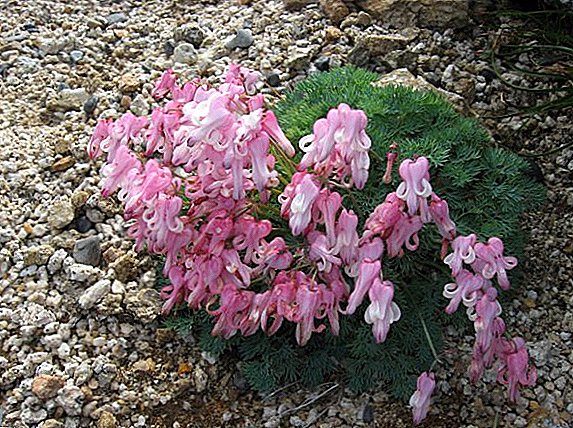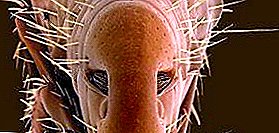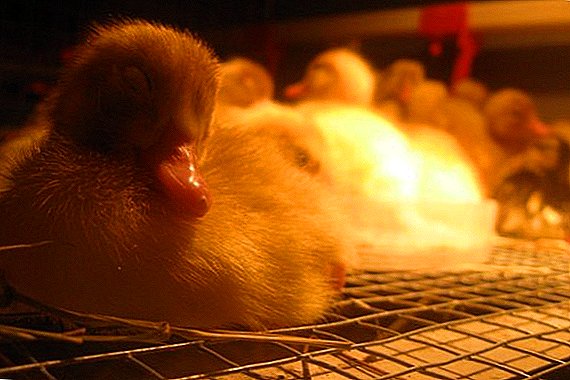 Asplenium is one of the many varieties of fern, which is most commonly found in home gardening. Due to the unusual, exotic leaves, it has high decorative qualities and fits perfectly into any home interior. It is impossible to call aslenium an unpretentious plant, but if you follow certain agrotechnical recommendations, you can grow it in a greenhouse or apartment.
Asplenium is one of the many varieties of fern, which is most commonly found in home gardening. Due to the unusual, exotic leaves, it has high decorative qualities and fits perfectly into any home interior. It is impossible to call aslenium an unpretentious plant, but if you follow certain agrotechnical recommendations, you can grow it in a greenhouse or apartment.
Did you know? The name "asplenium" comes from Greek and is translated as: "a" - "not", splen - "spleen". The name is associated with the alleged relevant healing properties. Asplenium’s homeland is South Africa, the tropics of Asia and Oceania.
Aslenium Room Fern: types and description
Asplenium, also known as the Kostenets fern, belongs to the genus of perennial ferns of the Kossentse family. The genus includes about 700 species growing in temperate, subtropical and tropical latitudes. In the wild, the plant predominantly hides in rocky crevices or grows on brick walls. Asplenium can be found in some countries of Europe, as well as in India, New Zealand, Australia, Madagascar and other countries of Southeast Africa.
All types of aspleenium look different: there are epiphytes, lithophytes and land plants, with different descriptions of external characteristics. Plant height can be from a few centimeters to two meters, and leafy plates, or fronds, can be solid smooth, pinnately dissected, with long short petioles or without them at all. The root system in different types of asplenium also varies: from creeping rhizomes to powerful short vertical roots covered with brown scales. A common characteristic is the linear form of spores (sorus), located at the bottom of the frond.
The diversity of aspleenium can be observed only in the wild, where all its species grow in conditions of natural habitat. In home gardening, only a few dozen are common, among which the most common are:
- Asplenium viviparous - very beautiful and unusual terrestrial fern species. Differs arcuate curved wyai, four-pinnate, on short petioles. The length of the leaf plates reaches 60 cm, and the width is up to 20 cm. A characteristic feature of the Aspenium viviparous is brood buds, which develop on the upper side of the leaf, and after maturation fall to the ground and root. The only place where the fern Aslenium lives viviparous is East Africa, the island of Madagascar.
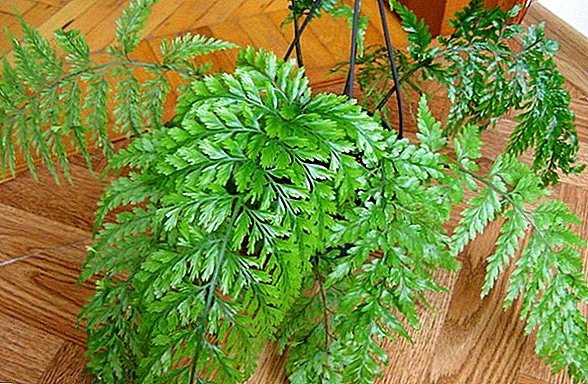
- Asplenium Onionaceous - Another terrestrial species of fern, very similar to the previous one, but the leaf plates are wider and closer to each other. Vayi are tripty-pinnate, on short petioles, more than a meter long. This species also has brood buds that root when it hits the ground. The homeland of onion-growing asplenium is the wet regions of Australia, India and New Zealand.

- Asplenium South Asian - large, epiphytic or semi-epiphytic fern. It has a straight, narrow semi-meter fronds collected in a dense outlet. The leaf plates are back-lanceolate, belt-like, solid, on short petioles. The surface of the sheet is slightly wavy, as if strung on a central vein. The root system is short. In the wild it grows in coastal areas of Australia, on old snags or stumps.
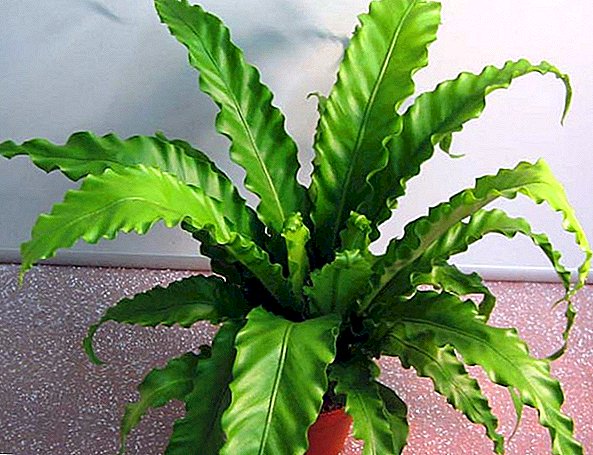
- Asplenium Scolopendry - Known among gardeners as “reindeer tongue”, it has similarity with the plant asplenius nesting, only its fronds are arched, bending towards the ground. This is the most common species in the culture, which has a large number of varieties and hybrids. The most popular forms are ferns with heavily sinewy or curly leaf plates.
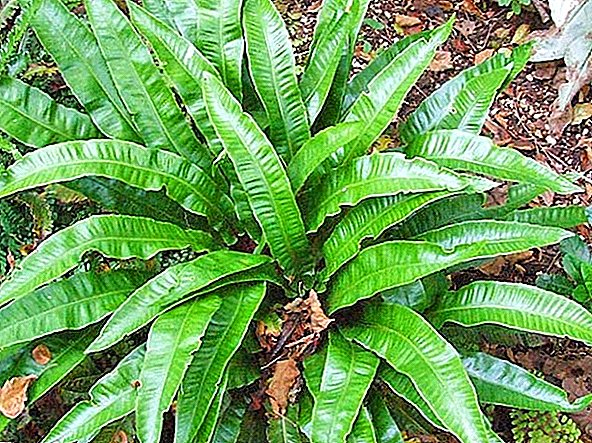
- Asplenium nesting - This is an epiphytic species, similar to the South Asian, but has a more compact size and a wide open rosette of leaves. In nature, the asplenium nesting is distributed in the territory from the Malay Archipelago to East Africa, as well as in Madagascar and Hawaii.
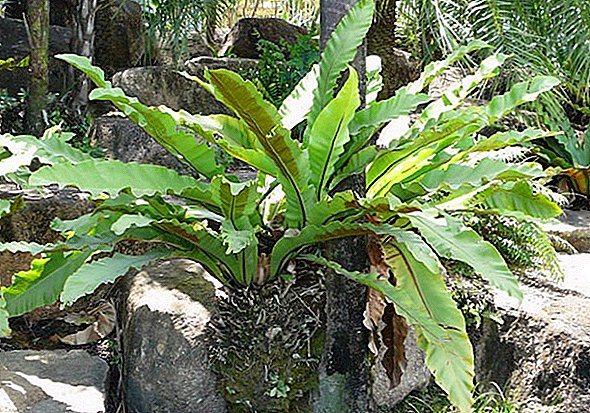
Choosing a place for asplenium in the room
Properly chosen place - the key to successful cultivation of fern aslenium at home.
Does Asplenium Need Lighting?
Asplenium is a shade-loving fern and does not tolerate bright light, direct sunlight on its leaf plates is contraindicated. When choosing a place for growing asplenium, it is better to give preference to windows that face the north, north-west and north-east sides. If on the north side there is no possibility to place the plant, then it is better to place the container with it at a distance of three meters from the window.
Optimum temperature and humidity for growing
Asplenium is a thermophilic plant; its care involves the creation of an optimal air temperature for the plant at home. The temperature at which the fern feels comfortable is + 21 ... +24 ° С. He will perceive a higher temperature and dry air negatively - the leaf plates will dry out, new fronds will stop growing, which will lead to the death of the plant. Does not like Asplenium drafts and sudden changes in temperature, so the airing should be careful. It is desirable to lower the temperature a bit during the winter, but not less than to +16 ° C, otherwise the plant may freeze and shed its leaves.
Soil for growing asplenium
 Terrestrial species of asplenium prefer light, slightly acidic, loose soil enriched with organic additives. A mixture of sod and leaf earth, humus, peat and sand is suitable as a substrate in the ratio 2: 3: 3: 1: 1. It is also good to add small pieces of charcoal, clay shards and chopped sphagnum moss to the ground. For epiphytic plants, a mixture of peat moss with peat, coconut fiber and pine bark is recommended. Ready shop soil for orchids will also be suitable.
Terrestrial species of asplenium prefer light, slightly acidic, loose soil enriched with organic additives. A mixture of sod and leaf earth, humus, peat and sand is suitable as a substrate in the ratio 2: 3: 3: 1: 1. It is also good to add small pieces of charcoal, clay shards and chopped sphagnum moss to the ground. For epiphytic plants, a mixture of peat moss with peat, coconut fiber and pine bark is recommended. Ready shop soil for orchids will also be suitable.
Features of landing and reproduction of room asplenium
Depending on the type of asplenium, the methods and features of its reproduction differ. Viviparous species breed by brood buds that root in the ground, all the others - by dividing the queen cell. In the latter case, only adult ferns can be divided. This is usually done with a spring uterine transplant. The root must be cut vertically into two or four parts, so that each divided sapling contains several points of growth. After dividing the seedlings immediately need to be planted in loose, wet soil.
At home, aslenium can also be propagated by sowing spores. To do this, gently scrape off a spore spoon from a mature sheet plate onto a previously spread sheet of paper. It is necessary to sow spores in spring on the surface of calcined peat soil. Air temperature for spore germination must be at least + 22 ° С. Landings covered with glass or film to maintain moisture. After the seedlings appear, they are thinned, leaving a distance of 3 cm. After three weeks the plants are transplanted into separate containers. For asplenium, wide and small pots are suitable, in which a drainage layer made of pebbles or expanded clay is placed before planting. Such a substrate is quite loose and unstable, therefore, for better rooting, the fern is fixed in a pot with a wire frame.  If it is necessary to propagate the viviparous asplenium, then brood buds that have matured and disappeared, need to be pressed into light soil rich in organic matter. After that, put the container with the landings under the glass or film for an optimal microclimate. As soon as the first leaves appear, it means that the fern has taken root.
If it is necessary to propagate the viviparous asplenium, then brood buds that have matured and disappeared, need to be pressed into light soil rich in organic matter. After that, put the container with the landings under the glass or film for an optimal microclimate. As soon as the first leaves appear, it means that the fern has taken root.
Important! When planting seedlings asplenium can not be tamped with the soil around them. The roots of the plant like a loose soil in which they can breathe, so you need to make several additional holes in the pots.
Care for asplenium at home
Room flower Asplenium is not the easiest plant to care for. For its cultivation, it is necessary to constantly maintain an atmosphere similar to the natural habitat of a fern.
How to water asplenium
 Water ferns need only warm, soft, defended with water. This is done every two days in such a way as to constantly maintain a moist but not wet soil. Both stagnation of water and dryness are unacceptable - this will lead to the death of asplenium. In hot summertime, watering increases, in winter it decreases. Also, the plant is constantly in need of high humidity, which should be at least 60%. Dry asphenium dries. Therefore, periodically it is necessary to spray the plant with warm water in the summer and gently wipe the leaves with a damp cloth in the winter.
Water ferns need only warm, soft, defended with water. This is done every two days in such a way as to constantly maintain a moist but not wet soil. Both stagnation of water and dryness are unacceptable - this will lead to the death of asplenium. In hot summertime, watering increases, in winter it decreases. Also, the plant is constantly in need of high humidity, which should be at least 60%. Dry asphenium dries. Therefore, periodically it is necessary to spray the plant with warm water in the summer and gently wipe the leaves with a damp cloth in the winter.
Important! Do not place asplenium in close proximity to batteries and fireplaces.
Fern feed
Young aspleniums especially need to be fed at the stage of active growth and formation of shoots. During this period, usually from April to September, a solution of mineral fertilizers is applied under the root twice a month. Adult plants are fed once a month, in the summer, with fertilizers for indoor plants.
Aslenium Pruning
Fern Asplenium does not need a regular pruning to form a bush. His slender fronds have the correct form and independently form a spectacular, symmetrical rosette. Only old dried and yellowed sheet plates are subject to cutting as needed.
Transplant indoor fern
Asplenium transplantation is necessary for its proper and continuous cultivation. This is done annually or every two years. When transplanting, the dead roots are removed, and the living need to be handled very carefully, so as not to damage, as they grow very slowly, and their damage leads to prolonged illness of the plant. Asplenyum transplanted into shallow containers with loose, moist soil. 
Major pests and diseases of asplenium
The main pests of the indoor fern asplenium are the scythe, the spider mite and the parasites of the nematode. For the destruction of the scale insect and mite, you can use the insecticide "Aktellik", "Fitoverm", "Fufanon" at the rate of 1-2 ml per liter of water. It is more difficult to fight nematodes, chemicals will not help here, since parasites penetrate the skin of the leaf. In this case, only cardinal pruning is necessary with complete removal of all damaged plant fragments. Of the diseases most often, the fern Asplenium affects gray or root rot, which occurs when improper watering. In general, most of the problems with this plant are related to the violation of the mode of care, for example:
- if the tips of the leaves of a fern dry up and die, this indicates a lack of moisture.
- brown spots on the leaves indicate that the asplenium is too hot, or that it has been overfed with fertilizers;
- if sheet plates curl, it is too cold;
- if the leaves become very pale, almost transparent, it means that excess light strikes the fern, it must be rearranged in the shade.







